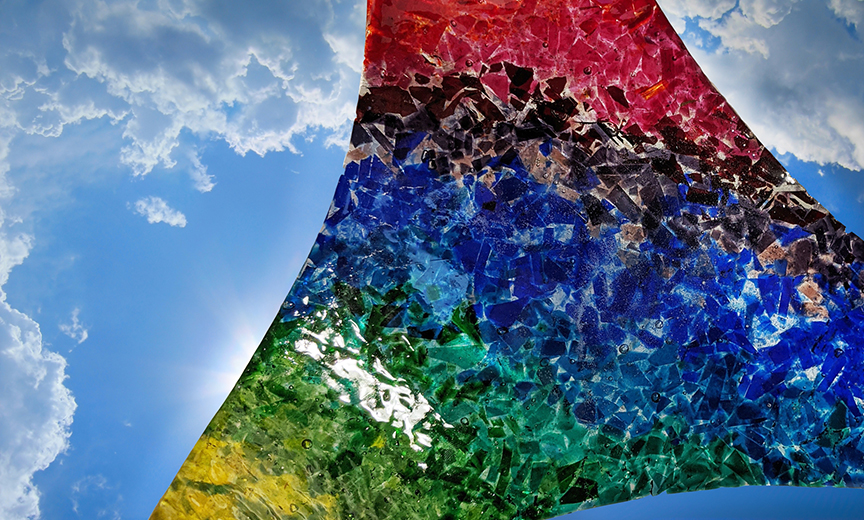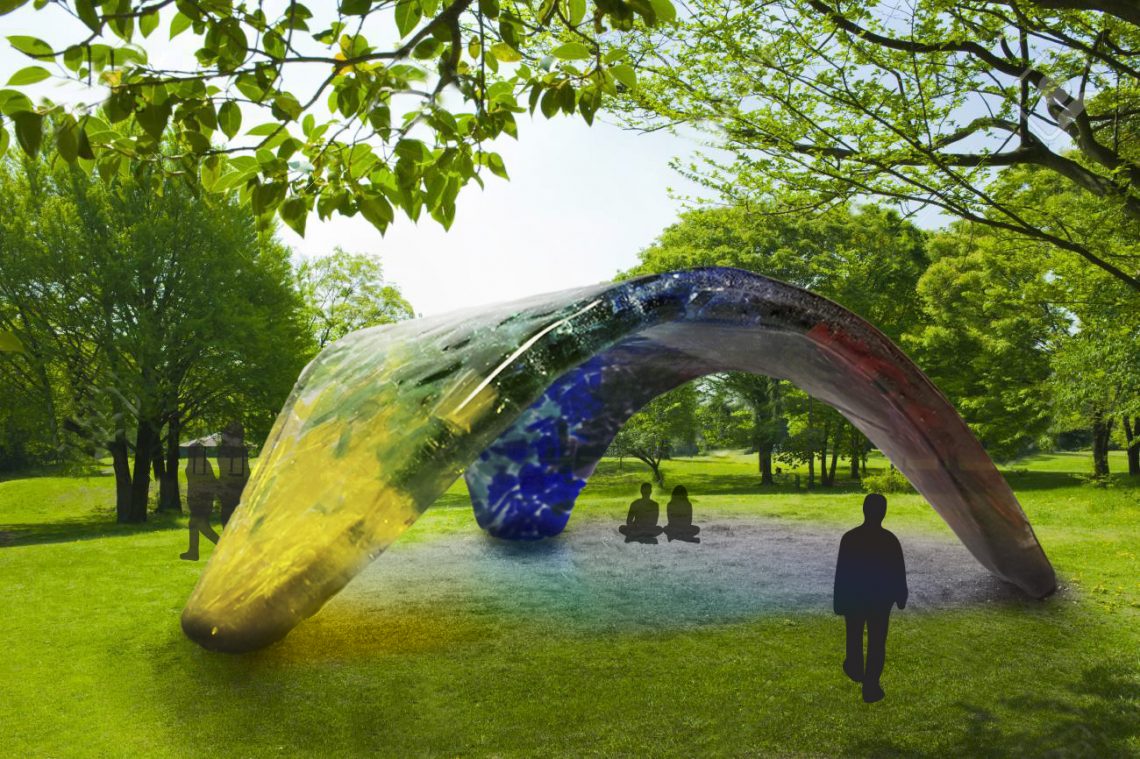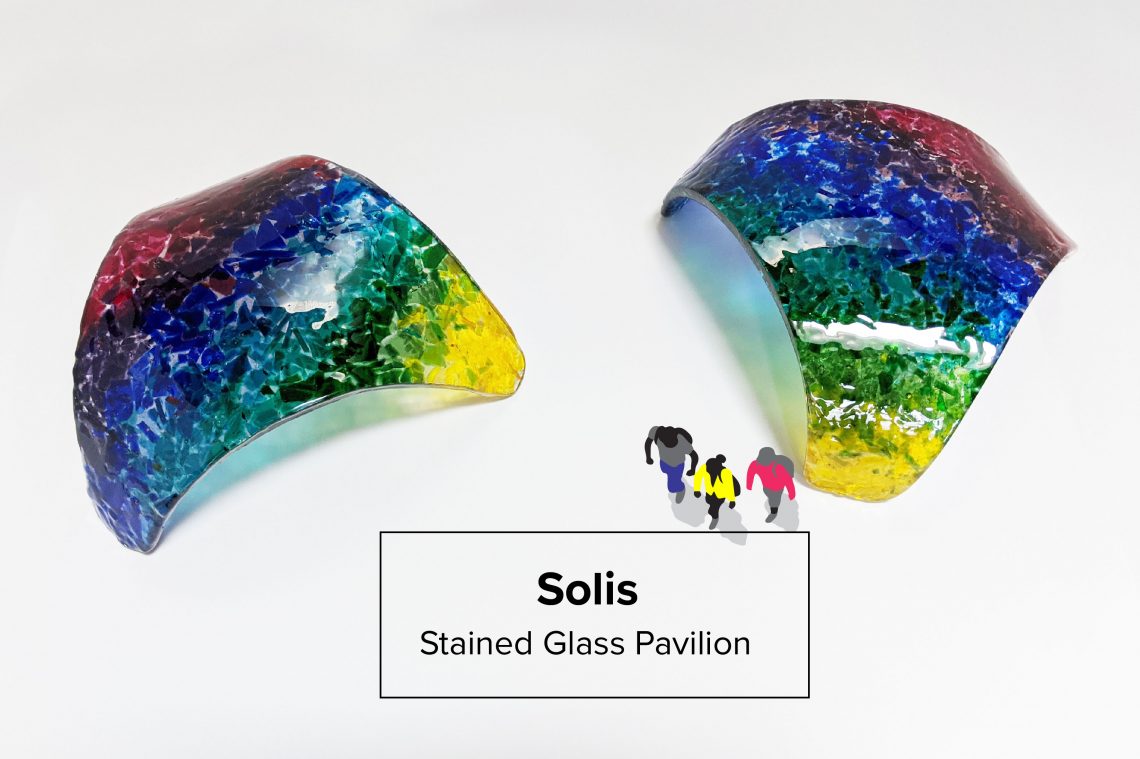Solid Stained Glass Pavilion
Problem
In the Anthropocene, humans are faced with the greatest ecological challenge yet — climate change. According to the Intergovernmental Panel on Climate Change (IPCC 2018), the effects of climate change will impact the entire planet, making many places uninhabitable, sending millions of displaced refugees away from their homelands, destroying infrastructure and ecosystems, and sending an estimated 18% of insects, 16% of plants, 8% of vertebrates to extinction in a 2-degree-centigrade-increase scenario (179). The warming of the planet is caused by the release of greenhouse gas emissions (carbon dioxide, methane, nitrous oxide, and fluorinated gases) into the atmosphere. Greenhouse gases are released through the burning of fossil fuels, solid waste, trees, biological materials; as well as the decay of waste and gastric emissions from livestock (EPA 2020). Solving climate change requires an incredible amount of diplomacy and negotiation to navigate the complexities of global cooperation between governments, industries, and individuals (IPCC 2018). According to interviews, on the individual level there is a sense of hopelessness around the topic of climate change, disconnecting individuals from their sense of agency and duty to protect the environment that sustains conditions for human life. Religious institutions which traditionally have been the primary cultivators of hope also divide people as they often focus on differences between each religion and become exclusionary to each other, often to the point of violence (Harari, 2018). This is problematic, as solving climate change demands a unified hope that prioritizes the protection of diversity and shared knowledge.
How might we revitalize hope in the public to reconnect them with their sense of meaning and the efficacy of their actions towards solving climate change?

Solution
First and foremost there are several technical changes that must occur. The primary two are: to change production and consumption patterns to prevent waste, as well as to move away from fossil fuels and into renewable energies. These two are required because they will reduce the amount of resources being consumed as well as replace those resources from a sustainable source. Simultaneously, investing in carbon sinks, like growing forests, will draw down carbon from the atmosphere and sequester it. These changes will largely be driven by industry and government, however it is essential to maintain public engagement and individual agency. People are the geological force causing climate change therefore we must encourage people to change their behaviors by providing a sense of meaning in change. This sense of meaning is bound in the connection to other human beings and our responsibility to create an environment where people can flourish. A solution therefore should bring people together upon the theme of protecting humans’ common home, planet earth.
Light is a source of inspiration for many theologies, the presence of it used as a metaphor for good and evil, truth and knowledge. The celebration of light is inherently a celebration of life itself. The meaning of the future could be to promote and support life, in all its cultural and ecological diversity. To work together to solve climate change we must come to know each other’s truth claims and see their inherent value, as only once they are taken together do they point to the truth. To represent this, Solis is designed to have no image, no claim to the truth, rather by engaging with color one can contemplate the meaning of existence in their own terms. For this purpose stained glass makes the perfect material as the play of natural sunlight and color can cascade over the subject. It is a space of public gathering, a symbol of peace between people and nature and an object for contemplation.


Sources
Harari, Y. N. (2018). 21 Lessons for the 21st Century. Random House.
IPCC, 2018: Global warming of 1.5°C. An IPCC Special Report on the impacts of global warming of 1.5°C above pre-industrial levels and related global greenhouse gas emission pathways, in the context of strengthening the global response to the threat of climate change, sustainable development, and efforts to eradicate poverty [V. Masson-Delmotte, P. Zhai, H. O. Pörtner, D. Roberts, J. Skea, P.R. Shukla, A. Pirani, W. Moufouma-Okia, C. Péan, R. Pidcock, S. Connors, J. B. R. Matthews, Y. Chen, X. Zhou, M. I. Gomis, E. Lonnoy, T. Maycock, M. Tignor, T. Waterfield (eds.)]. In Press
Sources of Greenhouse Gas Emissions. (2020, April 11). Retrieved from https://www.epa.gov/ghgemissions/sources-greenhouse-gas-emissions
